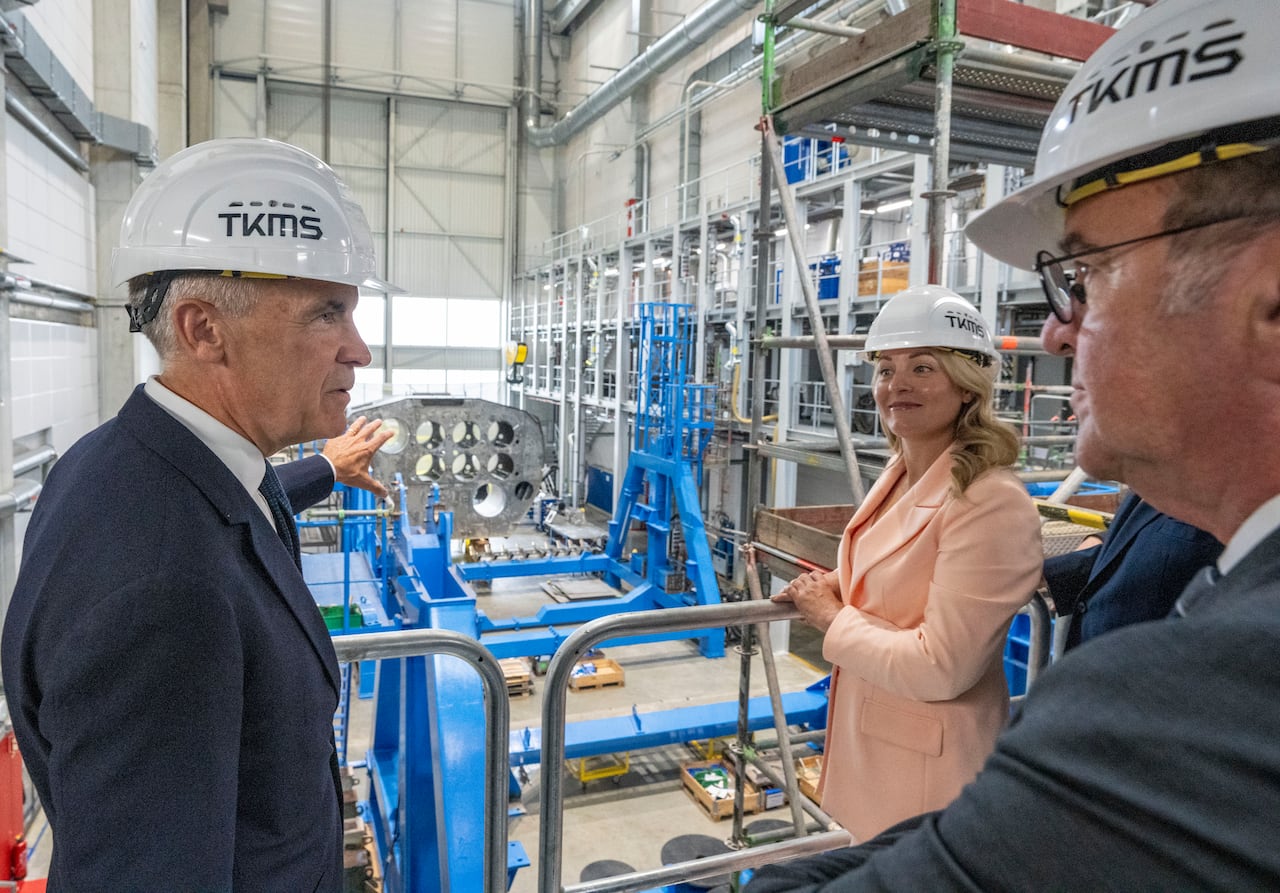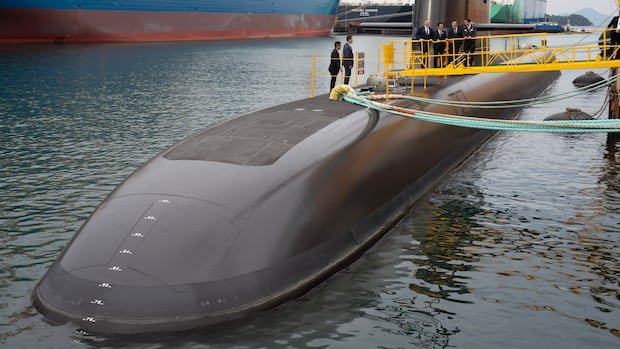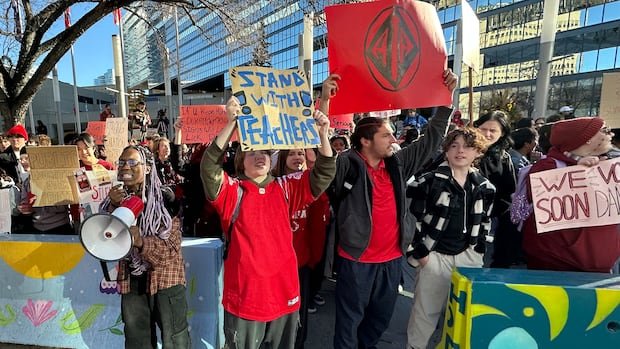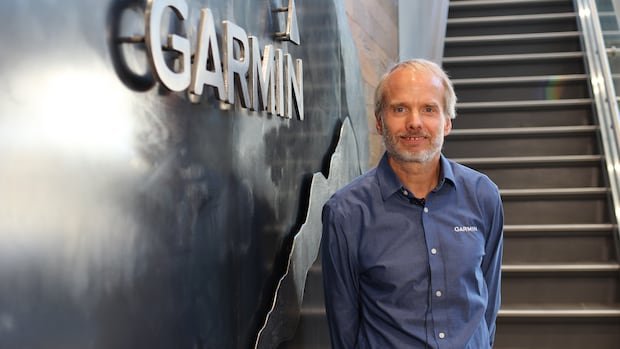South Korea put political weight behind its bold, high-risk bid to sell submarines to Canada on Thursday when Prime Minister Mark Carney took a look at one of the country’s new ships and toured the shipyard that would handle construction.
South Korean Prime Minister Kim Min-seok accompanied Carney during the visit to the Hanwha Ocean Ltd. facilities in Geoje, 96 kilometers from Gyeongju, where the Asia Pacific Cooperation (APEC) summit is being held. Earlier in the day, Carney also met with South Korea’s new president, Lee Jae Myung.
Hanwha Ocean and its partner Hyundai Heavy Industries have been quite aggressive in launching the KSS-III (Lot 2) submarine to Canada, delivering a detailed and unsolicited proposal to the federal government last winter, just before the last election.
The submarine Carney was able to see was recently launched and built for the South Korean navy. However, in a bold marketing move, it flew a Canadian flag on its mast, while a second ship under construction nearby had Korean and Canadian banners above it.
Aging subscribers to retire in 2035
Showing the prime minister the ship under construction was a not-so-subtle demonstration by the Koreans that their production lines are active and that they can deliver on a promise to deliver four submarines to Canada by 2035, the navy’s deadline to begin retiring the four aging Victoria-class ships.
Defense Minister David McGuinty and Vice-Admiral Angus Topshee, Commander of the Royal Canadian Navy, also took the tour.
Hanwha Ocean executive Steve Jeong, a former vice admiral in the Korean navy, said Carney had many specific questions and seemed impressed with what he saw.
The visit was significant because it is a sign that the federal government is prepared to move quickly toward a decision, perhaps as early as next year.
While in Berlin in August, Carney announced that the search for some submarine builders had narrowed down to two companies, Hanwha Ocean and ThyssenKrupp Marine Systems (TKMS) of Kiel, Germany, which the prime minister visited.
South Korean competition: Germany
One of the weaknesses of the German bid is that Canada probably won’t see the first TKMS-built submarine until 2032, and it would be later in the decade when the other ships arrive.
The submarine replacement program will be managed by the newly created Defense Investment Agency (DIA).
Acting Cabinet Secretary Stephen Fuhr said a few weeks ago that Ottawa will favor the subsea field that creates more Canadian jobs when it decides to award a contract.
Meanwhile, Topshee said both the Korean and German submarines meet the navy’s requirements, but noted that the submarine replacement project does not yet have a budget.
“I’m going to look for, hopefully, the measure in the budget that will provide the funds to acquire the submarines that the prime minister has been looking for,” he said.

what it could cost
Over the period 2017-18 to 2023-24, actual capital defense spending fell short of projected amounts by $18.5 billion.
Annual capital spending is projected to peak at $25.7 billion in 2030-31 and exceed $10 billion every year except 2043-44.
The government’s commitments to meet North Atlantic Treaty Organization (NATO) spending targets contribute to this increase, although this report does not assess the capital plan against those targets.
“The magnitude of the planned increase raises questions about the government’s ability to manage a greater volume of procurement activity and the ability of the national defense industry to support it.”








